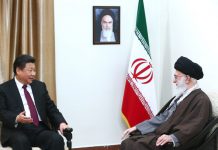Context
Introduction

Based on POLITACT’s Entropy Alerts, Vantage Point Analysis and Analysis of Perception and Perspective, following are a list of key themes which we consider vital to a meaningful geopolitical forecast for the South Asia region.
- The course of Pakistan’s current and future fight against extremists
- Pakistan domestic politics and NRO
- India’s Green Hunt Operation and the rise of Maoist in the region
- Changes in US Myanmar Policy
- Pakistan, Turkey and Iran Cooperation
- US-China Relations
- India-China Relations
- US Afghan Strategy
- NATO’s commitment to Afghanistan
- US-Iran Relations
- US-Russia Relations
- Saudi-Yemeni border situation
- Horn of Africa and Somalia situation
- Middle East Peace Process
Analysis
.jpg) Unfortunately, while the South Waziristan Operation is in progress, the deadly terrorist attacks are continuing unabated across the urban centers of Pakistan. The government has claimed that it is encountering relatively low resistance from the militants. The latter have a strategy, however: to demonstrate their ability to inflict indiscriminate punishment on the country, which in the coming days might include Pakistan’s economic and financial hub, Karachi.
Unfortunately, while the South Waziristan Operation is in progress, the deadly terrorist attacks are continuing unabated across the urban centers of Pakistan. The government has claimed that it is encountering relatively low resistance from the militants. The latter have a strategy, however: to demonstrate their ability to inflict indiscriminate punishment on the country, which in the coming days might include Pakistan’s economic and financial hub, Karachi.
Well before the start of the South Waziristan operation, President Zardari made a public statement committing the nation to military action there-it wasn’t clear at the time, however, whether or not the Pakistani Army would undertake it. Similarly, in the aftermath of Hilary Clinton’s three-day public relations trip to Pakistan, he stated that action against extremists will not end with Waziristan.
Meanwhile, both conciliatory and confrontational statements have emanated from India regarding the Kashmir dispute and the role of Pakistan-based Jihadists in carrying out terrorist activities in India. The conciliatory statement came from the Prime Minister of India while the threatening one came from the Interior Minister. The Indian Prime Minister is scheduled to meet Mr. Obama in the White House on November 24, the first state visit of the new US administration. This visit will have a significant impact on the US Strategy for the region.
Kerry and Karzai
Kerry and Karzai
We believe the following regarding the future direction of counter-terrorist operations in Pakistan and other events in South Asia:
- The US pressure on Pakistan will increase to act against the Afghan Taliban as the price to be paid for a role in a US strategy which includes negotiating with the Taliban. US has conveyed ample messages that its dire position in Afghanistan does not bode well for Pakistan either. The upcoming summit meeting in Washington between President Obama and Prime Minster Manmohan Singh is a key part of the deliberation process regarding the future direction of the US strategy in the region and India’s role in it. The next frontier of Pakistan’s counter- terrorist operations might be Baluchistan, where the Afghan Taliban’s Quetta Shura Council is believed to be located.
- The distinction between Al Qaeda, the Pakistani Taliban and other Jihadists is minimal, so action against one group is ineffective; one must act against all. It appears that the only reason the Pakistani government is presently drawing distinctions between these groups is tactical, so as to go after them one at a time. Thus, it is clear that in principle Pakistan bought in to the belief that all of these groups must be liquidated if the problem of terrorism in the region is to be resolved. The recent sophisticated extremist attacks on the Army’s General Headquarters in Rawalpindi and the simultaneous ones in Lahore lends fresh support for this view. Based on the above, we at POLITACT have concluded that the next counter-terrorist operations will very well take place in Pakistan’s urban centers, including Karachi. Some analysts are calling it the “Civil War” scenario.
- It is not clear if President Zardari is making public commitment to military action in consultation with the military, or as a means to pressure them, thus protecting his good standing with the United States. The growing tensions in Parliament and in the ruling parties over the National Reconciliation Ordinance suggest that the second scenario is the correct one. This is exactly the intention of the Kerry-Lugar law (largely a response to Indian lobbying), designed to foster civilian government control of the military. The authors of the bill, however, did not take a critical factor into account: what happens if the head of the civilian government loses public and party support? In such a scenario the US would find itself the ally of unpopular leaders – obviously not a desirable position to be in.
- The conflicting statements from Indian leaders regarding Kashmir and Pakistani support for the Jihadists are also intended to buy time. In the past, President Zardari made a sensation when he called Kashmir-related Jihadists terrorists. India’s conciliatory gestures strengthen President Zardari’s hand against the military – if it is indeed standing in the way of an honorable peace between the two countries and a resolution of the Afghanistan situation. Moreover, India it is trying to exploit Pakistan’s economic weakness and dependence, including the water disputes, to get the country to change its ways – or so the Pakistanis think.
- India has other concerns, notably the Maoists in the Northeast, and is conducting Operation Green Hunt against them. The Maoists are known to have established a presence in 20 states and India has decided to confront this potentially lethal insurgency with 70,000 paramilitary troops. Thus, India benefits from delaying a resolution of the Kashmir situation, but on the other hand, failing to deal with the problem in a timely manner could lead to catastrophe if the country had to deal with two insurgencies at a time. India is curious to know if the insurgency in the Northeast is receiving support from other Maoists in the region. Meanwhile, the US has also altered its policy towards Myanmar and opted for more direct talks with the military junta there; it is also committed to countering China and strengthening India’s position in the Pacific realm and the South and Central Asian region generally.
- President Obama’s new approach to foreign policy can best be understood as one of “engagement” with adversaries and “reengagement” with allies. This is, of course, in marked contrast to the more confrontational credo of his predecessor: “Either you are with us or against us.” With the new Democratic administration in place, the emphasis is on the use of economic aid and diplomacy. A new willingness on the part of the US to compromise can be seen in its dealings with Russia regarding the missile defense shield and with Israel regarding settlements. Yet it remains unclear how successful diplomatic overtures, by themselves, will be. Thus, with respect to Afghanistan and Iran the US appears to playing a game of wait and see, trying to understand the unfolding reality before deciding on its direction. President Obama will also be making important visits this month to China, South Korea, Japan and Singapore which will further define US relations in the Pacific region.
As the geopolitical environment of the region remains in flux, buying time is beneficial for all involved, but only if it helps to reduce threats and not escalate them. If not handled well, today’s advantage can become tomorrow’s liability. Moreover, rash decisions can lead to costly mistakes, which can only benefit an adversary.
Tell US What You Think
Feedback@politact.com



